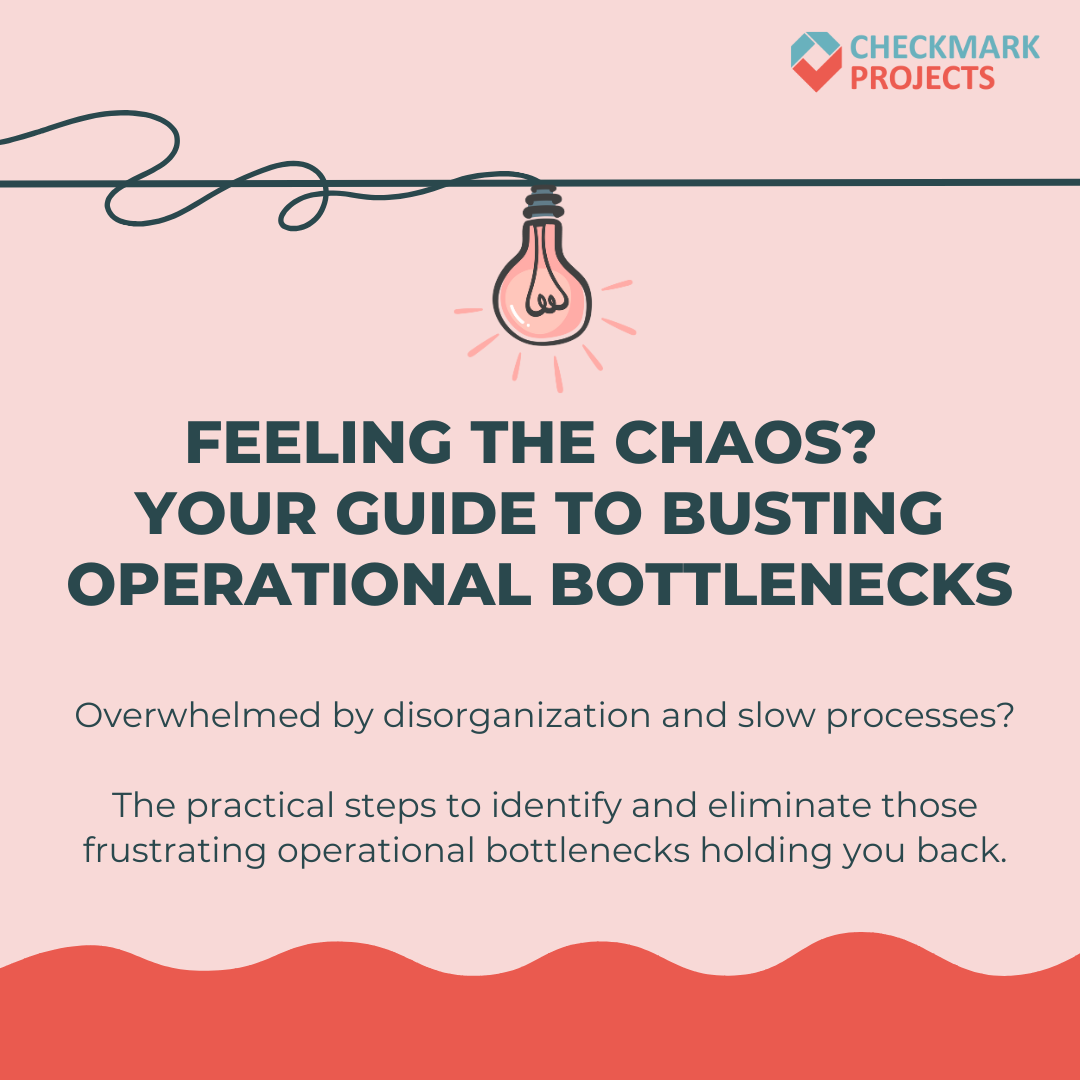Untangle the Chaos: Your Guide to Busting Operational Bottlenecks
Smoother Operations Ahead.
Feeling like things could run smoother and faster? If growth feels stifled, operational bottlenecks – those frustrating roadblocks slowing processes and hindering progress – are likely the culprit.
Fortunately, bottlenecks aren't insurmountable. A systematic approach allows you to pinpoint these friction points and implement effective solutions for smoother operations and accelerated growth. As a fractional COO, I've seen firsthand how tackling these inefficiencies unlocks significant potential for businesses of all sizes. Let's explore a practical guide to decoding your bottlenecks.
Step 1: Detective Work - Spotting the Clogs
To fix a problem, you first need to identify it. This requires a close look at your processes. Key investigation areas include:
Map Your Processes: Visualize core workflows (e.g., onboarding to delivery). Look for multiple handoffs, long waits, and task accumulation.
Listen to Your Team: Employees offer frontline insights. Use interviews, meetings on pain points, or anonymous feedback to note recurring issues.
Analyze Your Data: KPIs like cycle time, lead time, error rates, and resource utilization hold clues. Spikes or low performance can signal bottlenecks (e.g., long fulfillment lead times).
Observe and Document: Watch processes in action, noting task durations and points of delay or confusion.
Step 2: The Diagnosis - Understanding the Root Cause
Once you've identified a potential bottleneck, don't jump to solutions immediately. It's crucial to understand the why behind the slowdown. Ask "why?" repeatedly (the "Five Whys" technique can be helpful here) to drill down to the fundamental cause.
Common root causes of bottlenecks include:
Lack of Resources: Insufficient staffing, equipment, or budget in a specific area.
Inefficient Processes: Outdated, overly complex, or poorly documented workflows.
Lack of Training: Employees lacking the necessary skills or knowledge to perform tasks efficiently.
Technology Limitations: Outmoded or poorly integrated software and tools.
Poor Communication: Lack of clear communication and collaboration between teams or individuals.
Single Point of Failure: Reliance on one person or resource for a critical task.
Step 3: The Treatment Plan - Implementing Solutions
With the bottleneck and its cause understood, it's time for solutions. Strategies vary, but common approaches include:
Optimize Processes: Streamline by eliminating steps, automating tasks, and standardizing procedures (consider Lean/Six Sigma).
Increase Capacity: Address resource shortages by hiring, investing in equipment, or outsourcing.
Invest in Training: Enhance team skills and efficiency through targeted development.
Upgrade Technology: Implement tools to automate, improve communication, and provide better data insights.
Improve Communication: Foster clear channels and implement regular updates/feedback.
Distribute Workload: Address single points of failure through cross-training and thorough documentation.
Step 4: The Follow-Up Care - Monitoring and Continuous Improvement
Implementing a solution isn't the end of the story. You need to monitor the impact of your changes and be prepared to make further adjustments.
Track Key Metrics: Continue to monitor the KPIs you identified in Step 1. Did the changes lead to the desired improvement?
Gather Feedback: Regularly solicit feedback from your team on whether the implemented solutions are working effectively and if new bottlenecks have emerged.
Iterate and Refine: Operational improvement is an ongoing process. Be prepared to revisit your processes and make further adjustments as your business evolves.
Unlocking Your Business Potential
Identifying and resolving operational bottlenecks, though challenging, is a vital investment for your business's future. A systematic, data-driven approach eliminates inefficiencies, boosts productivity, improves morale, and enables sustainable growth.
Feeling the impact of operational roadblocks? An objective external perspective can be invaluable. If you're ready to decode your bottlenecks and unlock your full potential, a fractional COO offers the expertise and guidance needed to navigate this crucial process.
If you would like help determining your bottlenecks and how to break through and scale, schedule a call and find out how we can help!

